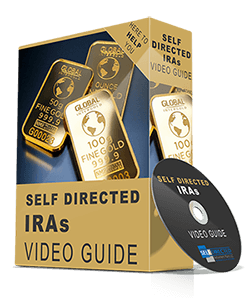
There is an assumption by many people that employer-sponsored retirement plans are generic. The fact is that there are several types of retirement plans which an employee can operate with an aim of saving for retirement.
Your choice of a retirement plan is determined by several factors about your employer such as, what economic sector the employer is involved with as well as the size and type of that employer.
An employer-sponsored plan for saving towards retirement can be used by both the employee and the employer. By having money directly deducted from the pay check, both parties get a chance to save even before they start on spending the pay check. Some employers even go an extra step of matching their employees’ contribution, something you wouldn’t mind, now would you? Plus this will definitely act as a direct incentive to save more.
The seven most popular employer-sponsored retirement plans and their features are:
SEP Plan (Simplified Employee Pension)
- This retirement option is mostly offered by small businesses to their employees.
- As an employee you can also set up one yourself.
- Typically known as a SEP-IRA plan, it is based on Individual Retirement Accounts.
- Annual contribution limit is pegged at 53,000 dollars.
SIMPLE Plan (Savings Incentive Match Plan for Employees)
- Offered by small employers to their employees.
- As an employee you contribute an amount of your choice and your employer can match that amount up to 3% of your salary.
- There is a limit to how much contribution one can make in a year, for instance, for 2016, it stands at 12,500 dollars. If one is 50 years and above, there is a provision for a ‘catch-up’ contribution which also has a limit ($3,000 for 2016).
401(k) Plan
- Is mostly offered by large businesses.
- It is funded by an employee but the employer may also contribute a matching amount.
- The account is wholly managed by the employee including choice of how to invest the funds. These contributions are usually tax-deferred up until the time withdrawal is done at retirement age.
- If the funds are withdrawn before retirement, one is penalized.
- There is a limit to how much one can contribute annually, for instance the limit for 2016 is 18,000 dollars.
Roth 401(k) plan
- The benefits are the same as with a Roth IRA and the contributions by an employee are similar with a 401(k) plan.
- Employee contribution limits are also the same as those of a 401(k) plan, which is better than for a Roth IRA.
- Any contribution into this plan is not tax-deductible.
- All earnings accumulate tax.
403(b) Plan
- This is identical to the 401(k) plan save for the fact that it is designed for NGOs.
- 403(b) Plans are funded by employees primarily with tax-deductible contributions.
- Employers can match contributions but to a certain percentage.
- Contribution limits are the same as those of 401(k) plans with earnings accumulating on a tax-deferred basis.
457 Plan
- These plans are similar to 401(k) plans and are offered to local and state government employees.
- They have identical characteristics with 401(k) plans including contribution limits.
- The main difference is that if an employer offers both a 401(k) Plan and a 457 Plan, as an employee you can contribute fully to both plans hence the benefit of a doubled limit.
Defined Benefits Pension Plan
- The plan is also known as a traditional retirement plan.
- It was more common in the 1970s.
- Replaced by defined contribution plans.
- The plan is controlled fully by the employer and the employee has no control at all over the funds. The employer is responsible for supplying the employees’ contribution and the monthly benefit given to him/her.

Rick Pendykoski is the owner of Self Directed Retirement Plans LLC, a retirement planning company based in Goodyear, AZ. He has over three decades of experience working with investments and retirement planning, and over the last ten years has turned his focus to self-directed ira accounts and alternative investments. If you need help and guidance with traditional or alternative investments, call him today (866) 639-0066.



